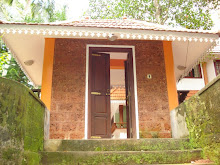
There are two parallel movies in High and Low.
Don't be mistaken. Its not an earlier version--in format--of Naalu Pennungal.
High and Low, like wikipedia rightly says, plays out in virtually two acts.
But the last scene of the movies proves that actually it is not two separate acts. It is just a contrast.
A top business executive -- of course, it has to be Kurosawa's favourite Toshiro Mifune -- has a detailed plan in place to take control of his company, National Shoes, and topple other direcors who are plotting to dethrone the owner. After even mortgaging his hill-top villa, Gondo has staked every penny of his for that one masterstroke.
Then, disaster strikes.
Gondo gets a call, which claims to have kidnapped his son. The ransom: 30 million bucks (yens, I presume).
Of course Gondo is willing to pay up to save his only son.
But by a quirk of fate and through mistaken identity, the family realises that the child kidnapped is not Gondo's son, but his son's friend--the son of his chauffer. A man of integrity, what course does Gondo take?
After a lot of contemplation, Gondo decides to rescue the child at the cost of utter ruin.
The second act, which actually has already started playing itself out with the police's involvement, starts in earnest now.
The working out of the case by the police is a treat to watch. The meticulous planning, detailed procedures--and status reports--media moves, which otherwise would come across as plain drudgery, are so smoothely and excitingly portrayed that I wished our Suresh Gopi brand of filmmakers picked up a page or two from this.
Just when we start thinking that the movie has completely lost the original track, we reach teh climax scene.
This last 5 minutes, I felt was the capsule form of Dostoyvesky's Crime and Punishment.
The kidnapper, now apprehended and behind bars, seeks to meet Gondo.
He expresses his angst, explaining why he hated Gondo for his wealth and status -- as symbolised by his house on the hill top -- as compared to his own penury in the slums downhill.
While trying to maintain his composure and moral posture, the kidnapper simply uses word to justify himself, while a visibly serene Gondo hears him out.
After all that grandstanding and brouhaha, the kidnapper ends the scene--and the movie--with a violent fit that he throws, out of sheer frustration, guilt and angst.
A fantastic movie...

